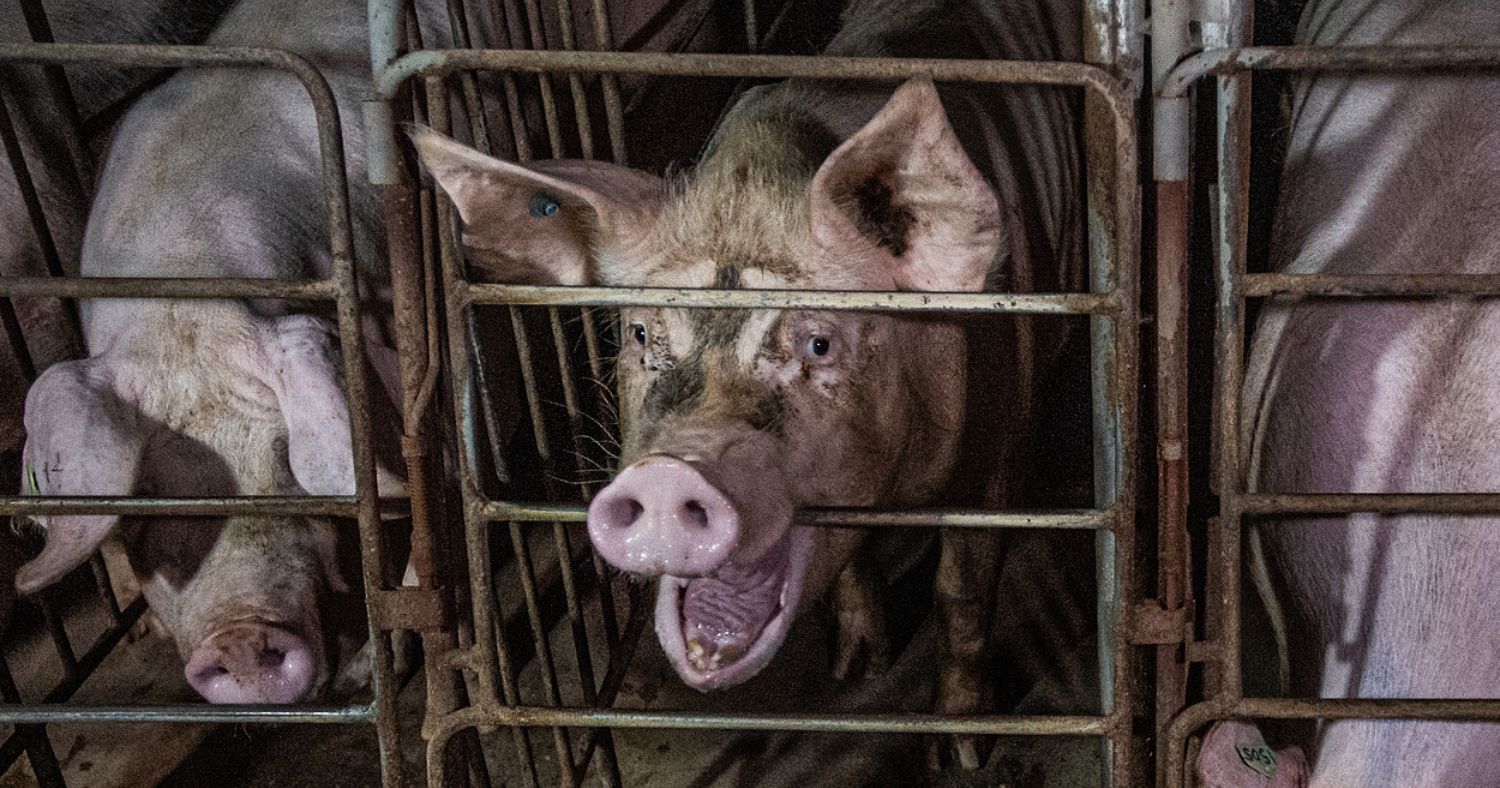It is human nature to anthropomorphize animals. Movies, television, and books give animals human personalities and voices, so we are raised believing or assuming that animals think and feel like humans do. The issues with this way of thinking arise when animals do not react the way we expect them to. Somewhere along the way we forget that they are animals, very different from humans in several ways. In a 2003 decision from the Supreme Court of Yukon (R. v. Miller) the judge, Justice McIntyre, found that the Defendant, Mr. Reese Miller, had kicked his dog with steel-toe boots, but had not caused the dog pain. Justice McIntyre’s decision was an appeal decision from an earlier Justice of the Peace decision under Whitehorse’s Animal Control Bylaw (the Bylaw).
The dog did not yelp and, after being kicked repeatedly, the dog, upon a command from the Mr. Miller, immediately jumped into the bed of a truck without apparent difficulty. Mr. Miller was found not guilty of causing unnecessary pain to an animal and the appeal was dismissed. This decision acquitted Mr. Miller of a charge contrary to s. 119 of the Bylaw, which states that no person shall cause, either directly or by neglect, or permit to be caused unnecessary pain, suffering or injury to an animal.
In Mr. Miller’s case, the Crown witness described several vicious kicks by Mr. Miller to the dog. Whereas Mr. Miller and his wife denied that there had been any kicking whatsoever. Regardless of Mr. and Mrs. Miller’s statements, the Justice of the Peace found that the evidence supported that the kicking took place and that the kicking was considered abuse. However, the Bylaw does not mention abuse, it mentions unnecessary pain, suffering and injury. Because of this, the Justice of the Peace said that although he was comfortable in the finding that an abusive action took place, he was not comfortable with the evidence that the abusive action caused unnecessary pain, suffering or injury.
Justice McIntyre came to the conclusion that the Justice of the Peace made a finding of fact that there simply was no evidence that something more than the least physical discomfort had occurred. On the evidence, there was nothing heard from the dog and nothing seen that would support the proposition that something more than the least physical discomfort had occurred. The facts of this case and the evidence that suggests the dog was moving well, immediately after being kicked, helped Justice McIntyre conclude that the force of the kicks were not strong enough to cause unnecessary pain to the dog (i).
The evidence presented that the dog did not yelp, immediately jumped into the truck, 90 minutes later it seemed fine, and 12 days later there was no sign of an injury. Justice McIntyre asked several questions pertaining to the evidence, such as: how a man could viciously kick a dog twice in the ribcage and stomach area and not cause the dog injury; how the dog could not cry out immediately; how the dog could jump immediately into the back of the truck; and, how the dog could even come close or stay close to the person that inflicted such grave injury on him?
All the questions raised by Justice McIntyre were relevant to the case and important in reaching a judicial conclusion. However, based on the evidence, the judicial conclusion reached by the Justice of the Peace and Justice McIntyre do not appear to take into account that very critical piece of information: the dog, the victim, was exactly that, a dog.
Animals do not show pain the way humans do. We have preconceived ideas about the appearance and behaviour of animals in response to pain. We project onto animals how we would react to situations and expect the same reaction from the animal. It is important to remember that animals are not human and they do not communicate through directly translatable means. Science and observation have brought us to a point where we may be able to infer what an animal is feeling or thinking, but we do not know for sure. While it may often be harmless to do so, there are situations where we must take great care not to project how a human would react to a situation onto an animal. We cannot assume that a dog is not in pain simply because it does not cry out, as we might, and as we might have expected it to.
Justice McIntyre asked how the dog was not injured after being kicked by a steel-toe boot. The dog was examined by a veterinarian 12 days after he was kicked and the vet did not find a lasting injury. However, simply because Mr. Miller’s kick did not break the dog’s ribs does not mean that the dog only suffered mere physical discomfort.
Regarding the dog’s ‘failure’ to cry out immediately, there are studies and reports about how animals react to and demonstrate pain. There are many reasons that could explain why the kick did not elicit a yelp from the dog. The dog could have been accustomed to the abuse and learned to hide its reaction to the pain so as to not be seen as weak. Many animals are pack and/or prey species. As they evolved over time, part of their defence was to pretend or act like they were not in pain. Sick animals or animals that are in pain are preyed on by predators. Most animals inherently hide their pain because in the wild it is considered a weakness that can cause a pack to turn on an animal or leave an animal defenceless. So, although not all animals hide their pain, most of them will hide their discomfort to a certain extent (ii).
Another reasoning that brought Justice McIntyre to his decision was that the dog was able to jump into the back of the truck immediately after Mr. Miller kicked him. Again, this evidence should not lead directly to the conclusion that the dog did not suffer an injury or unnecessary pain. Even injured or in pain, the dog was trained to jump into the truck upon command. The dog was clearly aware that a command had been given, and was aware that Mr. Miller was waiting for the response. Although one cannot know for sure what the animal was thinking or why it did what it did, the presence of an observer and its effects on the behaviour of the animal should be considered. For example, some species, such as rabbits and guinea pigs, may remain immobile, especially if the observer is an unfamiliar person (iii). In order to see pain-related behaviour, an observer should be hidden so the animals do not know they are being observed. For all species, the most accurate way to study pain-related behaviour is to hide the observer or use a video camera (iv).
Recognizing pain-induced behaviour is difficult or impossible without knowing the normal behaviour of a particular or individual animal. Many animals mask their pain with normal behaviour and it is common for animals to hide their fear and distress (v). For instance, dogs may wag their tails and greet people in spite of being in pain. In addition, behavioural changes in response to pain might be very different from the typical responses associated with people who are in pain (vi). With respect to dogs, the responses to pain vary depending on the situation and the particular dog. Some dogs are very stoic, and will show few outward signs even when in extreme pain. Dogs that have been abused, or are not strangers to pain, may react differently to pain than a dog that has never been kicked before. Dogs and cats may be domesticated, but they have wild roots and survival kicks in when they are ill or injured. In the wild, an infirm animal is vulnerable to attack, and it is a survival advantage to act like nothing is wrong (vii). There are no generally accepted objective criteria for assessing the degree of pain that an animal is experiencing. Species vary widely in their response to pain, and often animals of the same species show different responses to different types of pain (viii).
Unfortunately, for the particular dog in this case, Mr. Miller was acquitted based on the dog’s reaction to the kicks not being one that humans would expect from an animal in pain. Animals elicit varying reactions to pain or illness. The reactions can be different between humans and animals, different between the varying species and, further, different between the specific animals within the same species. One cannot blanket how all creatures show pain based on how one particular species shows pain.
Provisions such as section 119 of the Bylaw will not be effective, so long as we continue to anthropomorphize animals and their expected reactions to violent actions. Mr. Miller kicked his dog with a steel-toed boot. The Bylaw is there to stop that sort of action and protect animals. An animal’s natural protection mechanisms should not absolve a person from the consequences of violating the legal protection afforded that animal.
Written by Stefanie Stamm – BA, JD – Articling Student for Animal Justice Canada
This blog and the contents herein are for informational purposes only and do not constitute legal advice. Readers are advised to seek legal counsel prior to acting on any matters discussed herein. The opinions expressed are those of the author.
Citations
(i) R. v. Miller, 2003 YKSC 64, [2003] YJ No 170, online: <http://www.canlii.org/en/yk/yksc/doc/2003/2003yksc64/2003yksc64.html>.
(ii) Brandon Lakes Animal Hospital, online: <http://www.brandonlakesanimalhospital.com/services/pain-in-animals/>.
(iii) Ibid.
(iv) Kevin J. Stafford and David J. Mellor, Improving Animal Welfare: A Practical Approach, Chapter 6: Painful husbandry procedures in livestock and poultry, online: <http://www.grandin.com/inc/improving.animal.welfare.ch6.html>.
(v) Research Animal Resources Centre, online: <https://www.rarc.wisc.edu/animal_health/pain_and_distress.html>.
(vi) Peter Hellyer, Recognizing and Assessing Pain in Animals, online: <http://www.merckmanuals.com/pethealth/special_subjects/pain_management/recognizing_and_assessing_pain_in_animals.html>.
(vii) Anne Fowler, Recognition of Pain in Wildlife, Australian Wildlife Carers Network, online: <http://www.training.ntwc.org.au/PDF/Ann-Fowlers-Pain-Management.pdf>.
(viii) National Research Council. Recognition and Alleviation of Pain in Laboratory Animals. Washington, DC: The National Academies Press, 2009, online:<http://www.nap.edu/catalog.php?record_id=12526>.



